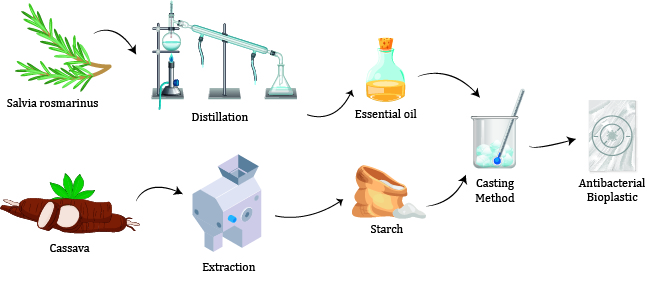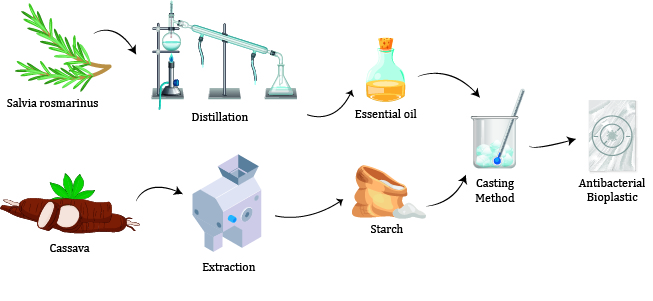Antibacterial activity and physicochemical characterization of bioplastic films based on cassava (Manihot esculenta Crantz) starch and rosemary (Salvia rosmarinus) essential oil
DOI:
https://doi.org/10.48162/rev.39.143Palabras clave:
polímeros, empaques, bacterias, vapor de aguaResumen

Bioplastics composed of renewable sources and antimicrobial components are desirable in food packaging. This study prepared bioplastic films with cassava starch and rosemary essential oil using a casting methodology. Film antibacterial activity, water vapour transmission (Wvt), mechanical resistance, and microstructure were measured after exposure to pathogenic bacteria such as Salmonella enterica, Escherichia coli, Staphylococcus aureus, and Bacillus cereus. Antibacterial activity was evidenced against the pathogens evaluated except for B. cereus. The films showed average values of Wvt 3.6988 (10-14 g/Pa s m), tensile strength 8.90 MPa, young modulus 1679.72 MPa, and elongation at break 4.33%. Film microstructure showed good adhesion to bioplastic components in the matrix. Bioplastics of cassava starch and rosemary oil constitute potential food packaging solutions mainly for fruits, egg-based products or chicken.
Highlights:
- Cassava starch, glycerol, tween-80, and rosemary essential oil produced proper antimicrobial films.
- Rosemary essential oil promoted antimicrobial action against coli S. entérica and S. aureus in films
- The high glycerol/tween-80 increased the flexibility and water vapor transmisión.
- Casting method promoted adhesion of the combined components and homogeneous film surface.

Descargas
Publicado
Número
Sección
Licencia
Derechos de autor 2018 Revista de la Facultad de Ciencias Agrarias UNCuyo

Esta obra está bajo una licencia internacional Creative Commons Reconocimiento-NoComercial-CompartirIgual 3.0.
Aquellos autores/as que tengan publicaciones con esta revista, aceptan las Políticas Editoriales.



